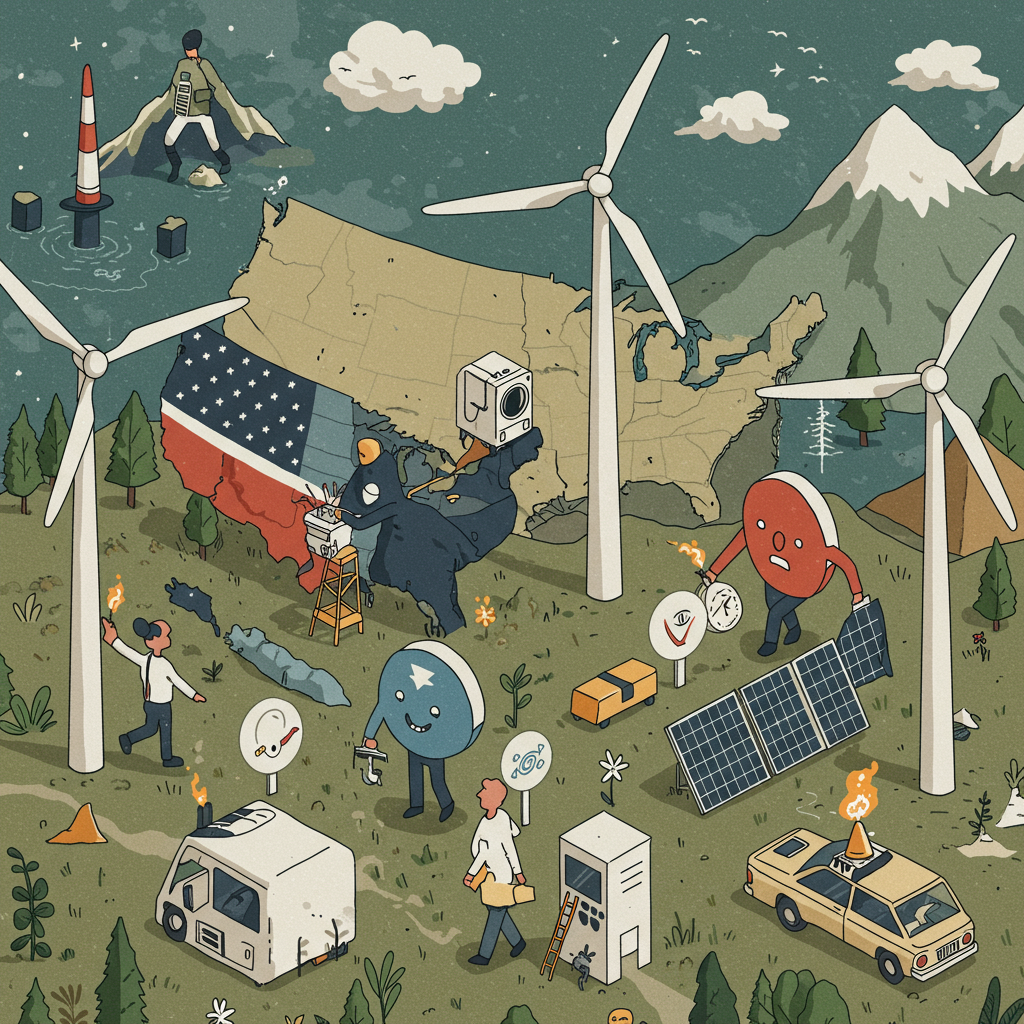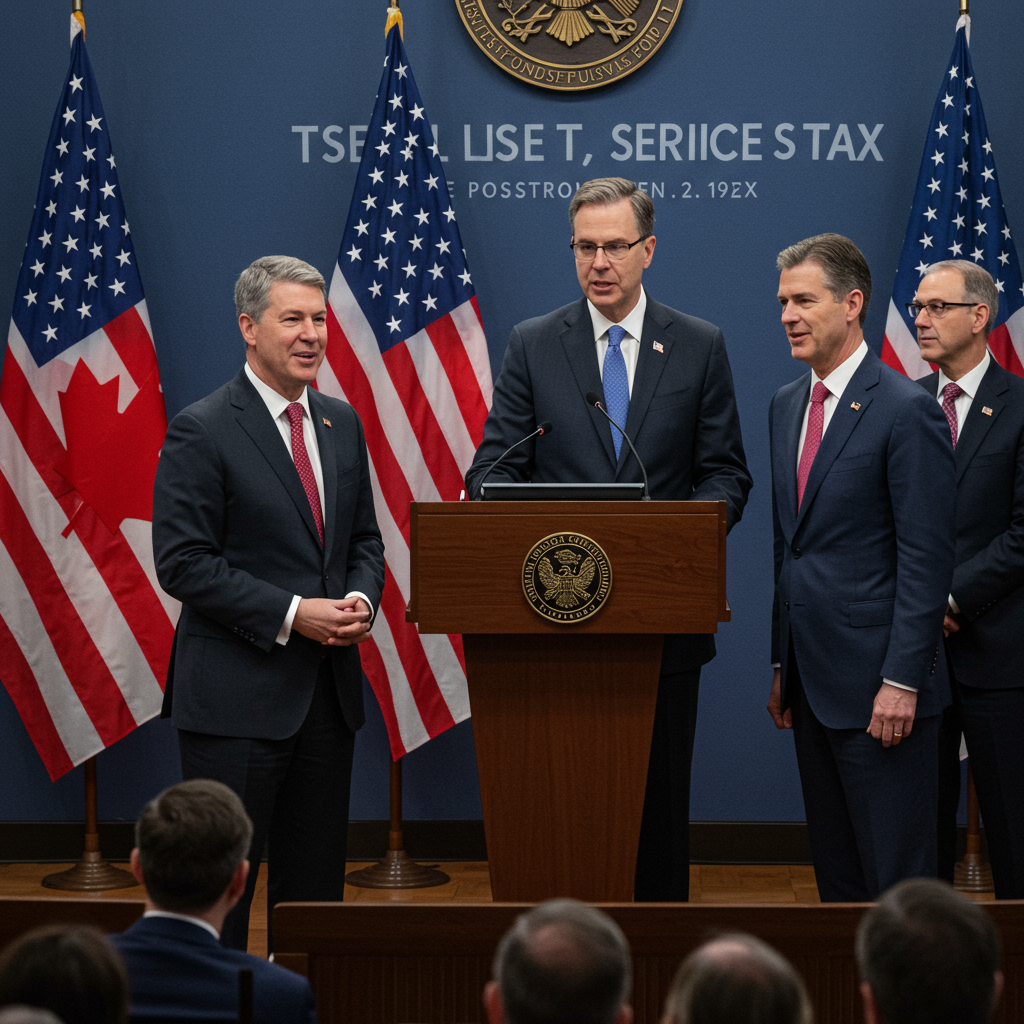President Biden once claimed dismantling his Inflation Reduction Act’s (IRA) clean energy investments would be too difficult and politically unwise. He called undoing them “politically costly and economically unsound.” Yet, a significant legislative effort is now underway. This push threatens billions in promised clean energy funding. It specifically targets the climate law that has spurred economic growth and created jobs across many states, including those with strong Republican majorities. This paradox reveals a deep divide between national policy goals and partisan priorities.
The potential rollback of these provisions carries substantial economic consequences. It could jeopardize investments for hundreds of businesses nationwide. This situation underscores the uncertainty inherent in energy policy during times of political transition. Experts warn a reversal could cost the U.S. billions and cede global leadership.
Unexpected Beneficiaries: Red States Embrace Clean Energy
Passed in 2022, the Inflation Reduction Act includes major provisions aimed at accelerating the transition to clean energy. Estimates for its climate and clean energy spending reach over $1 trillion across a decade. These funds offer powerful incentives for private investment across various sectors. This includes manufacturing clean vehicles, deploying renewable energy projects, and building essential supply chains.
A surprising outcome has been the geographic spread of these investments. Data shows many IRA-incentivized projects are landing in Republican-held congressional districts. Over half of recently announced clean energy and vehicle manufacturing projects fall into this category. This has fueled a boom in manufacturing and energy jobs in places not typically seen as clean energy hubs.
States often labeled “red” have attracted considerable clean energy investment. When measured relative to their Gross Domestic Product (GDP), states like Wyoming, Nevada, Kentucky, and Georgia show high levels of activity. While states with large populations, such as California and Texas, receive the largest total dollar amounts, others benefit significantly on a per capita basis. These investments support diverse industries and create new jobs in local communities. Some analyses project the IRA could support over 848,000 jobs annually nationwide.
Why GOP Lawmakers Oppose a Law Helping Their States
Despite the clear economic benefits flowing into their districts, many Republican lawmakers remain strongly opposed to the IRA. A primary argument focuses on its cost, frequently criticized as “green corporate welfare.” Former President Trump and his political allies have explicitly stated their intention to cut IRA spending. They aim to reverse Biden’s broader climate policies entirely. Trump has labeled the clean energy push a “green new scam.”
Legislative attempts to repeal sections of the IRA are common. The House of Representatives has passed numerous bills targeting specific IRA provisions. These efforts often seek to prevent funding for program implementation. They also target funds like the Greenhouse Gas Reduction Fund for repeal. This highlights an ideological commitment to reducing overall government spending and regulatory burdens. This often overrides the localized economic advantages seen in their districts. Internal divisions also exist within the Republican party. Some fiscal conservatives push for deeper cuts, while others from more competitive districts worry about the negative impact on their constituents and local economies.
Proposed Rollback: Trump’s “One Big Beautiful Bill” Plan
The threat to the IRA is clearly outlined in proposed legislation and potential executive actions. House Republicans advanced a comprehensive package known as the “One Big Beautiful Bill Act.” This wide-ranging bill combines several major policy shifts. It proposes significant tax cuts, substantial spending reductions across government, and enhanced border security measures. The bill aligns closely with former President Trump’s stated policy priorities.
Analysis of the bill shows a direct effort to repeal clean energy incentives. To partially offset the proposed tax cuts, the bill specifically targets clean energy tax credits enacted under the Biden administration. It proposes either repealing these credits outright or accelerating their phase-out timeline. This move aims to reduce the net cost of the bill’s tax relief component. It places billions of dollars in planned clean energy investments at significant risk. Beyond legislation, experts note a new administration could also declare a “national energy emergency” to fast-track fossil fuels and pause clean energy funding disbursements (Source 1).
How the Inflation Reduction Act Could Be Dismantled
A future administration and Congress have several ways to weaken or repeal the IRA. These methods vary in difficulty and potential scope. A full legislative repeal requires passing new laws through Congress. While the IRA initially passed using a special budget process (requiring only a simple majority), achieving a complete repeal might still be challenging with slim partisan majorities. Targeted repeals of specific, less popular provisions are potentially easier through this route.
Executive action provides another path. A President can direct federal agencies to tighten eligibility rules for tax credits. They can also delay or withhold promised loans and grants. Reversing executive orders used to coordinate implementation would slow progress. Agencies could also be directed to revise or withdraw proposed regulations essential for implementing IRA programs effectively. Former President Trump’s team has signaled plans to scrap programs for EVs and offshore wind (Source 2).
Funding restrictions are also a potential tool. Congress can cut budget allocations for federal agencies crucial for IRA implementation. This could include agencies like the Environmental Protection Agency (EPA). Attempts have already been made in Congress to block funding specifically allocated for IRA execution.
Perhaps the most potent tool is the Congressional Review Act (CRA). The CRA allows Congress, with presidential approval, to overturn recently finalized federal rules. Rules finalized by the Biden administration after early August 2024 are particularly vulnerable. Overturning a rule via CRA prevents the agency from issuing a “substantially the same” rule in the future without specific new legislation. This could effectively gut certain IRA programs that rely heavily on those specific regulations. Vulnerable rules could include those related to the Methane Emissions Reduction Program or advanced manufacturing tax credits. Experts caution that executive orders and regulatory changes are less durable than legislation and can be reversed by future administrations (Source 1).
Economic Stakes and Local Impact
Rolling back the IRA carries significant economic risks for the United States. Businesses that made investment decisions based on the promise of these tax credits and incentives face substantial uncertainty. Billions of dollars in planned projects could be halted or canceled. This affects not only the companies directly involved but also the construction workers, suppliers, and local economies that benefit from these developments.
The job creation potential highlighted by various analyses could be significantly diminished. Industries relying on the IRA’s incentives for growth might stagnate or move investments overseas. States and localities that actively sought clean energy projects could see their economic development plans severely disrupted. This creates direct tension for lawmakers whose districts stand to lose economic activity and jobs. A recent report suggests repealing the IRA could cost the US approximately $80 billion in planned investments shifting to other countries and $50 billion in lost exports, significantly undermining America’s position in the global clean energy sector (Source 3).
The Critical Role of States in Climate Action
In the face of potential federal rollbacks, states are increasingly seen as crucial leaders in climate and energy policy. States hold significant authority over energy policy, utility regulation, building codes, and vehicle emissions standards. This allows them to set their own clean energy targets and mandates. This state-level leadership was particularly important during the previous Trump administration when states like California, New York, and others continued advancing their climate goals despite federal disengagement (Source 2).
Many states have set ambitious targets for reducing emissions or achieving 100% clean energy goals. Over 25 states and Washington, D.C., now have economywide net-zero goals or 100% clean electricity targets. Recent election outcomes have influenced the political landscape in states. While some states saw shifts in legislative control, others gained Democratic governors with veto power. Voters have also demonstrated support for climate action through ballot measures in some regions. Coalitions like “America Is All In” represent states, cities, and businesses committed to climate action regardless of federal policy (Source 2).
However, states face inherent challenges. Despite ambitious targets, many are reportedly not on track to meet them on schedule. Federal support, particularly the financial incentives provided by the IRA, significantly reduces the cost and complexity for states to achieve their goals. A federal rollback would make state-level progress much more difficult and expensive. This underscores the interdependent nature of federal and state climate efforts. Experts note the clean energy transition has economic momentum, but federal disengagement could stall progress in domestic supply chains (Source 3).
Frequently Asked Questions
What specific legislative proposal targets Biden’s climate law?
The main legislative effort discussed is the House Republican package called the “One Big Beautiful Bill Act.” This comprehensive bill proposes various policy changes, including tax cuts and spending reductions. A key element used to help offset some tax cuts is the proposed repeal or accelerated phase-out of clean energy tax credits established by the Inflation Reduction Act.
How could a potential future administration weaken the IRA without passing new laws?
Beyond legislation, a new administration could use executive actions. This includes directing federal agencies to tighten eligibility requirements for tax credits, delaying or withholding funds, or revising key regulations needed for implementation. The Congressional Review Act (CRA) is also a powerful tool, allowing Congress and the President to overturn recently finalized rules, potentially preventing similar regulations in the future without new legislation.
What are the potential economic consequences for the US if IRA clean energy policies are repealed?
Repealing these policies could jeopardize billions in planned investments for clean energy projects and manufacturing, including in states that have seen significant job growth from these sectors. According to one report, it could result in roughly $80 billion in planned investments shifting overseas and cost the US up to $50 billion in lost clean energy exports, potentially ceding ground to international competitors like China in this growing global market.
Conclusion
The future of the Inflation Reduction Act and its significant clean energy provisions remains uncertain. Despite clear evidence that the law has spurred investment and created jobs across the political spectrum, including substantially in “red” states, powerful forces in Congress and a potential future administration are seeking to dismantle it. The proposed “One Big Beautiful Bill Act” represents a direct legislative threat, while executive actions, regulatory reversals, and the use of the Congressional Review Act offer alternative paths to weakening the law.
This political tug-of-war highlights a fundamental clash. On one side is supporting new economic growth, domestic manufacturing, and job creation through clean energy incentives. On the other are specific ideological or fiscal priorities focused on reducing spending, cutting taxes, and promoting fossil fuels (Source 1, 3). As this conflict unfolds, the economic future for many communities nationwide, including those in red states that have potentially benefited most, remains uncertain. While ongoing efforts at the state and local level are crucial and demonstrate commitment (Source 2), they may face increased headwinds without consistent federal support and investment certainty (Source 1, 3).



